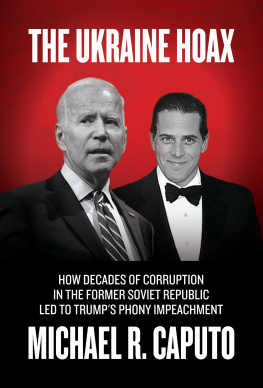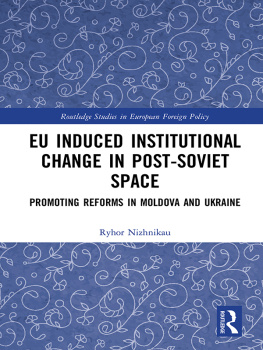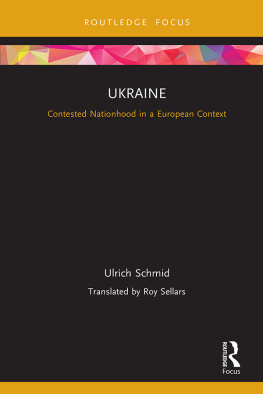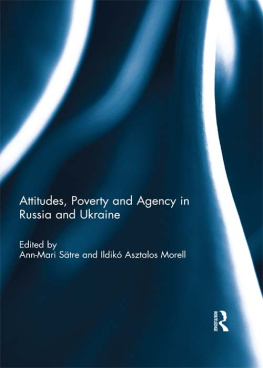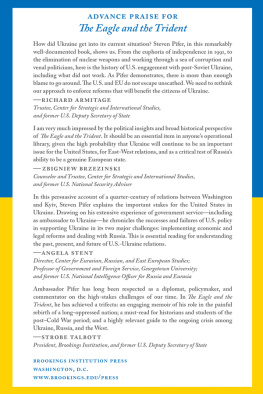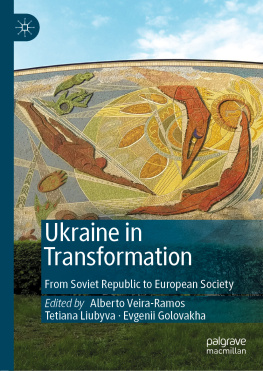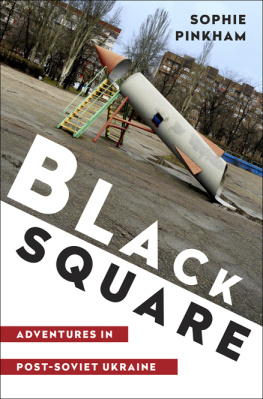Originally published in Trends in Organized Crime , Spring/Summer 2001, vol. 6, nos. 3 & 4.
Published 2001 by Transaction Publishers
Published 2017 by Routledge
2 Park Square, Milton Park, Abingdon, Oxon 0X14 4RN
711 Third Avenue, New York, NY 10017, USA
Routledge is an imprint of the Taylor & Francis Group, an informa business
Copyright 2001, 2004 by Taylor & Francis.
All rights reserved. No part of this book may be reprinted or reproduced or utilised in any form or by any electronic, mechanical, or other means, now known or hereafter invented, including photocopying and recording, or in any information storage or retrieval system, without permission in writing from the publishers.
Notice:
Product or corporate names may be trademarks or registered trademarks, and are used only for identification and explanation without intent to infringe.
Library of Congress Catalog Number: 2003057918
Library of Congress Cataloging-in-Publication Data
The prediction and control of organized crime: the experience of post-Soviet
Ukraine / James O. Finckenauer and Jennifer L. Schrock, editors.
p. cm.
Originally published in: Trends in organized crime, Spring/Summer
2001, vol. 6, nos. 3-4.
Includes bibliographical references and index.
ISBN 0-7658-0562-6 (pbk.: alk. paper)
1. Organized crimeUkraine 2. Law enforcementUkraine. 3.
CriminalsUkraine. 4. Post-communismUkraine. I. Finckenauer,
James O. II. Schrock, Jennifer L. III. Trends in organized crime.
HV6453.U38P74 2003
364.1'06'09477dc22
2003057918
ISBN 13: 978-0-7658-0562-1 (pbk)
James O. Finckenauer and Jennifer L. Schrock
On the main thoroughfare in Kiev stands an impressive monument to commemorate Ukraines tenth year of independence from the Soviet Union. Today, the Ukrainian capital is beginning to resemble many cities in Western Europe; scattered throughout the city are emerging signs of its integration into a global economy. The burgeoning of capitalism includes upscale clothing stores, Internet cafes, and that most recognized symbol of economic connection with the WestMcDonalds.
Remnants of Ukraines recent totalitarian past, however, remain. One tangible testament to this is a statue of Lenin still standing in the center of the city of Kharkiva symbolic reminder of the Soviet legacy that continues to haunt Ukraines struggle toward economic reform and democracy. This legacy will no doubt continue to color Ukraines path and influence its progress for many years to come.
Background
Like most former Soviet republics, since 1991 Ukraine has experienced a formidable proliferation of crime and corruption, along with its independence. Failed reform efforts, worsened by weaknesses in the Ukrainian infrastructure, have resulted in an environment that has created numerous lucrative opportunities for criminals. The economic restructuring taking place during Ukraines attempts to transition from a centralized state economy to a privatized economy have unleashed a multitude of problems. In fact, it can be argued that the explosion of crime and corruption in Ukraines postSoviet years was a kind of manifest destinya foregone conclusion given the peculiar character of the insulated system that was being opened to the outside world.
Ukraines reforms have been mostly based on Western models of democracy and on ideas for a market-based economy. One critical impediment to the reform process has been the fact that many of the Ukrainian reformers belonged to the power base of the former communist era. Predictably, very few of these old nomenklatura have been much interested in playing an active role in implementing the political and economic changes that are truly needed. These retrogrades have been largely successful in retaining power and influence, and as a consequence, have helped to establish a powerful and entrenched opposition to democratic reform (Foglesong and Solomon 2001).
One reaction of ordinary Ukrainians to this reality is a feeling of disillusionment. For example, one member of our U.S. delegation visiting Ukraine in 1998 to begin to lay the groundwork for the U.S.-Ukrainian research partnership was a relatively young Ukrainian, now living and working in Washington. A former prosecutor, he had been instrumental in convincing U.S. officials to support and fund the partnership. His hopes and enthusiasm were, however, practically dashed in our meetings in Kiev and Kharkiv. He observed that the officials with whom we were meeting were the same old Soviet types with whom he had been all too familiar in the past. He feared that they would only be interested in what they could get for themselves and their cronies, and that a power grab and control by them would effectively squelch attempts to achieve the results we desired. His fears were certainly not groundless, but the results reported here in part demonstrate considerable success in overcoming these obstacles.
Economic restructuring in Ukraine has served particularly to create new opportunities and avenues for organized crime groups many of which had already been bubbling just below the surface in the USSR. As noted by one of the Ukrainian contributors here, organized crime and corruption in Ukraine today are simply part of the aftermath of the overwhelming economic, cultural, and political changes that occurred during Ukraines transition to being a newly independent state.
For the average Ukrainian, the ramifications of Ukraines economic troubles have been devastating. Unofficial estimates have placed the number of unemployed at close to 3.5 million. As a result, many Ukrainians have turned to both licit and illicit shadow activities for their sustenance (Foglesong and Solomon 2001).
The symbiosis among government, business, and organized crime effectively guaranteed that crime and corruption had fertile breeding ground. Indeed, the resulting politicalcriminal nexus remains a major destabilizing factor in Ukraines economic and political development and reform efforts.
Why the U.S. Interest in Ukraine?
It was, in part, for exactly the reasons outlined above that during the early 1990s Ukraine became one of the primary recipients of foreign assistance from the United States. A stable and independent Ukraine was determined to be in the U.S. national interest. A country of some 50 million people, with a well-educated population, Ukraine was regarded as a useful buffer with respect to U.S. relations with Russia. In addition, it was home to some 5-6,000 scientists who had worked on weapons of mass destructionscientists who were now unemployed or underemployed. Concerns about transnational organized crime were, therefore, well founded.
While viewed as an important ally in dealing with post-Cold War problems, because Ukraines crime and corruption situation was increasingly seen as an impediment to economic transition and to achieving a more democratic way of life, a better understanding of the nature and magnitude of the problems, and of possible solutions, was deemed critical. Thus it was that in 1998, as part of a larger U.S. law enforcement assistance effort in Ukraine, the idea for a research partnership between criminologists and legal scholars in the two countries was born.



